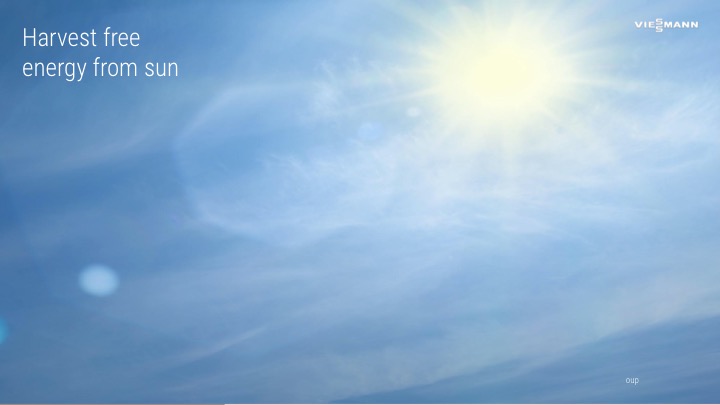Here is some expert advice and insight into Solar Thermal Systems.
Arnold Retief, CEO of ThermoWise, recently attended an online seminar which presented the fundamentals of solar thermal energy, types of solar thermal DHW systems, solar thermal DHW systems design principles and the Thermprotect overheating protection.
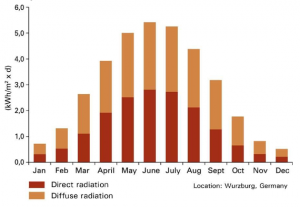 Solar principle and collector performances
Solar principle and collector performances
Every location on earth has different radiation levels.
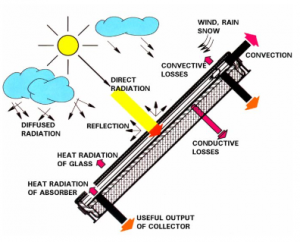 Collector performance
Collector performance
How do you predict how much energy a collector will produce?
3 x Vitosol 200FM Collectors
3 x 2.33 ft2 = 6.99 m2 (aperture)
Estimated Maximum Peak Hourly Output: 6.99 m2 x 700 W = 4.9 kW
Collector Orientation
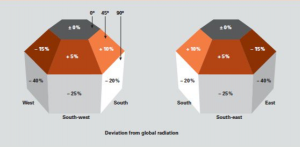 Subject to the angle and orientation of a surface, the level of insolation relative to a horizontal area reduces or increases.
Subject to the angle and orientation of a surface, the level of insolation relative to a horizontal area reduces or increases.
The amount of energy is greatest when the radiation hits the receiver surface at right angles. This case never arises as one moves away from the equator.
Solar DHW System types
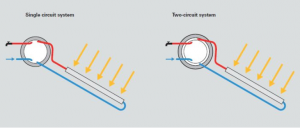 Transfer between cylinder and collector is governed by gravity.
Transfer between cylinder and collector is governed by gravity.
The pressure differential between the hot and cold heat transfer medium is utilised as propulsion energy.
Sizing and design criteria
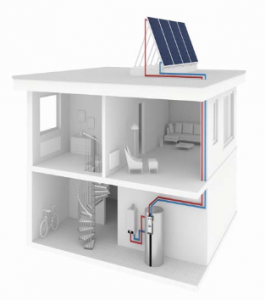 Pre-design steps for Solar Thermal projects:
Pre-design steps for Solar Thermal projects:
- What are the customers expectations?
- What is the budget for the project?
- What is the physical size available?
▪ Roof space available
▪ Building orientation / shading
▪ Mechanical room space available - What is the DHW load?
▪ Lit/day (true consumption)
▪ Water delivery temperature
▪ Usage profile – Daily, weekly, monthly - What is the back up required?
- What is the target energy offset or carbon emissions reduction?
Sizing and design criteria
Design software – how does it work?
▪ Data: Historical weather data (radiation and air temps)
▪ Inputs: DHW usage load, quantity and type of collectors, storage volume, piping, etc
▪ Calculates: All energy flow in solar system including:
▪ Solar radiation on collectors
▪ Collector efficiency
▪ Pipe and tank losses
▪ Predicts: Energy output of solar system, solar fraction, system efficiency, fuel savings, GHG emissions, etc
Overheating protection
 Overheating protection – why?
Overheating protection – why?
The best solar water heating applications:
• High volume, constant DHW consumption, Recirc. loops
• High usage during day
• 7 days per week usage
• 12 months per year usage





